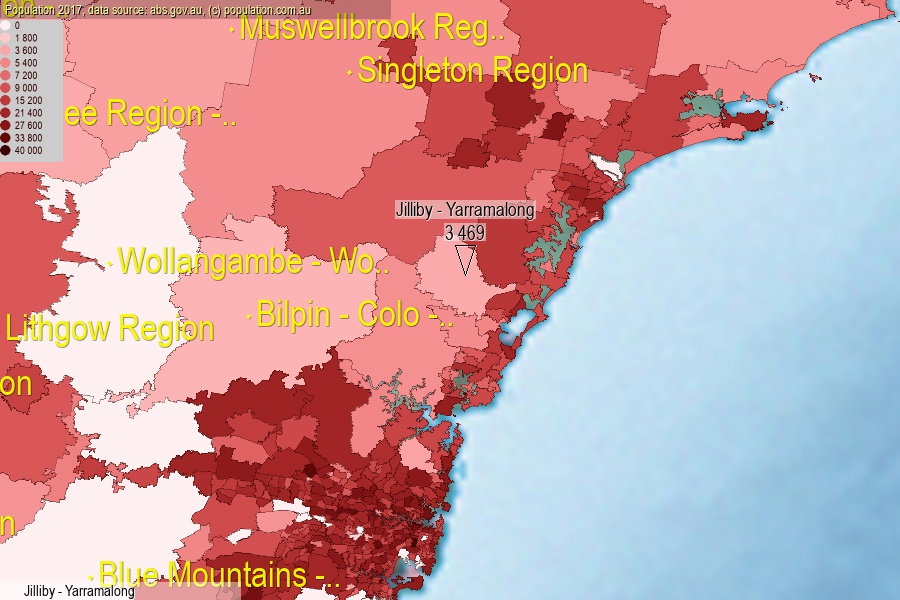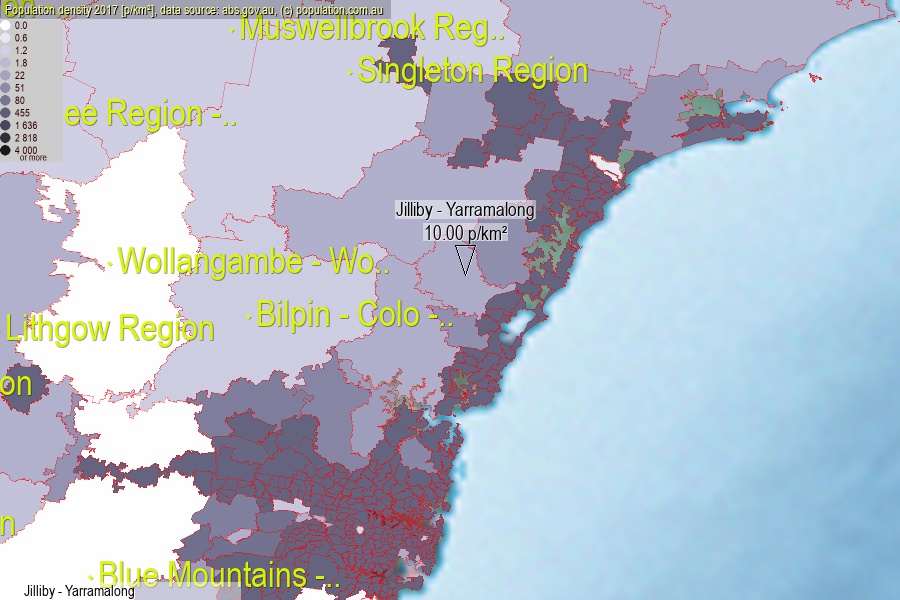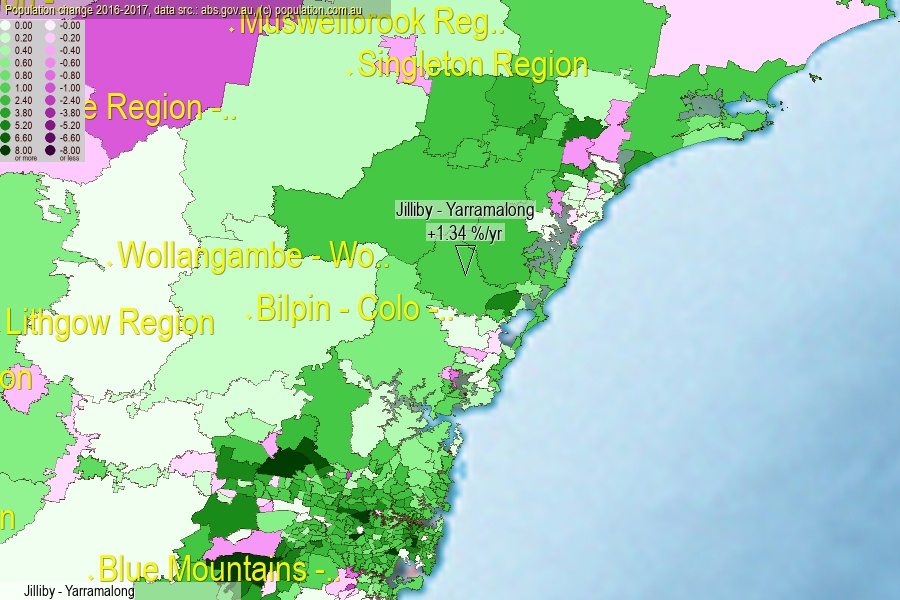 population.com.au
population.com.auLast official estimated population of Jilliby - Yarramalong (as Statistical Area Level 2) was 3 469 people (on 2017-06-30)[2]. This was 0.01% of total Australian population and 0.044% of NSW population. Area of Jilliby - Yarramalong is 346.80 km², in this year population density was 10.00 p/km² . If population growth rate would be same as in period 2016-2017 (+1.34%/yr), Jilliby - Yarramalong population in 2025 would be 3 860. [0]



Click to enlarge. Jilliby - Yarramalong is located in the center of the images.
Population [people], population density [p./km²] and population change [%/year] [2]
View borders » (new window) [4]
[1991-1992] +3.13 %/Yr.
[1992-1993] +4.00 %/Yr.
[1993-1994] +4.82 %/Yr.
[1994-1995] +4.55 %/Yr.
[1995-1996] +5.54 %/Yr.
[1996-1997] +4.61 %/Yr.
[1997-1998] +3.83 %/Yr.
[1998-1999] +2.91 %/Yr.
[1999-2000] +4.16 %/Yr.
[2000-2001] +3.61 %/Yr.
[2001-2002] -0.13 %/Yr.
[2002-2003] -0.90 %/Yr.
[2003-2004] -1.34 %/Yr.
[2004-2005] -0.17 %/Yr.
[2005-2006] -0.58 %/Yr.
[2006-2007] +0.27 %/Yr.
[2007-2008] +2.60 %/Yr.
[2008-2009] +2.70 %/Yr.
[2009-2010] +1.17 %/Yr.
[2010-2011] +0.61 %/Yr.
[2011-2012] +2.07 %/Yr.
[2012-2013] +2.06 %/Yr.
[2013-2014] +1.59 %/Yr.
[2014-2015] +1.45 %/Yr.
[2015-2016] +1.60 %/Yr.
[2016-2017] +1.34 %/Yr.
[0] Calculated with linear interpolation from officially estimated population
[1] Read more about SA2 and Australian Statistical Geography Standard (ASGS) on abs.gov.au
[2] Population data from Australian Bureau of Statistics (Population and density: 2017; change: 2016-2017)
[3] Digital Boundaries: Australian Statistical Geography Standard (ASGS) 2016.
[4] Border coordinates are simplifyed using Ramer-Douglas-Peucker algorithm.